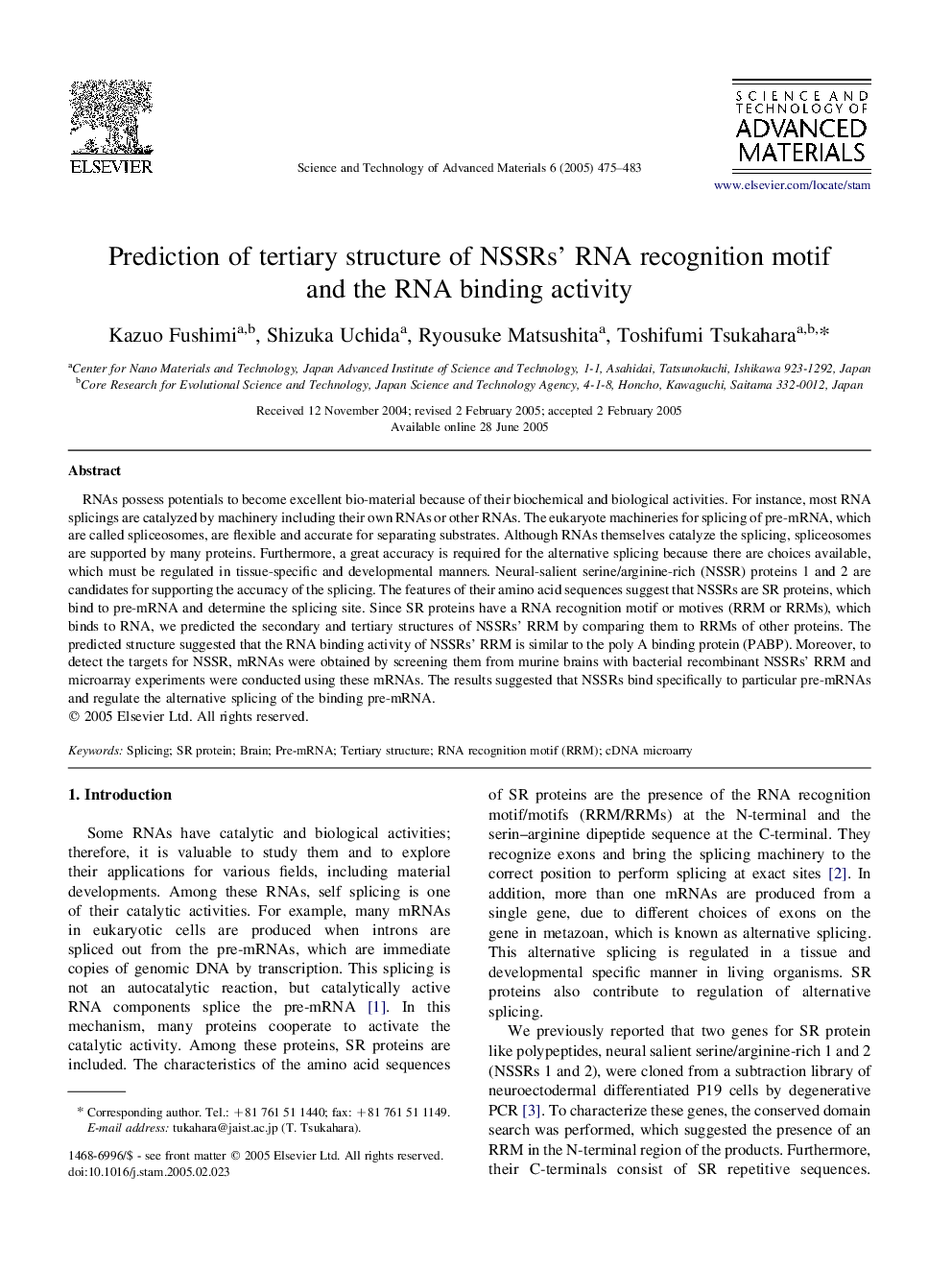| Article ID | Journal | Published Year | Pages | File Type |
|---|---|---|---|---|
| 9801374 | Science and Technology of Advanced Materials | 2005 | 9 Pages |
Abstract
RNAs possess potentials to become excellent bio-material because of their biochemical and biological activities. For instance, most RNA splicings are catalyzed by machinery including their own RNAs or other RNAs. The eukaryote machineries for splicing of pre-mRNA, which are called spliceosomes, are flexible and accurate for separating substrates. Although RNAs themselves catalyze the splicing, spliceosomes are supported by many proteins. Furthermore, a great accuracy is required for the alternative splicing because there are choices available, which must be regulated in tissue-specific and developmental manners. Neural-salient serine/arginine-rich (NSSR) proteins 1 and 2 are candidates for supporting the accuracy of the splicing. The features of their amino acid sequences suggest that NSSRs are SR proteins, which bind to pre-mRNA and determine the splicing site. Since SR proteins have a RNA recognition motif or motives (RRM or RRMs), which binds to RNA, we predicted the secondary and tertiary structures of NSSRs' RRM by comparing them to RRMs of other proteins. The predicted structure suggested that the RNA binding activity of NSSRs' RRM is similar to the poly A binding protein (PABP). Moreover, to detect the targets for NSSR, mRNAs were obtained by screening them from murine brains with bacterial recombinant NSSRs' RRM and microarray experiments were conducted using these mRNAs. The results suggested that NSSRs bind specifically to particular pre-mRNAs and regulate the alternative splicing of the binding pre-mRNA.
Related Topics
Physical Sciences and Engineering
Materials Science
Materials Science (General)
Authors
Kazuo Fushimi, Shizuka Uchida, Ryousuke Matsushita, Toshifumi Tsukahara,
